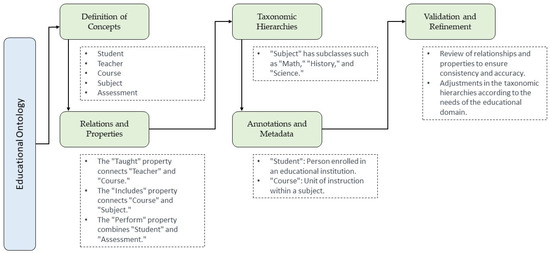3 Simple Techniques For Bioinformatics Tutor
3 Simple Techniques For Bioinformatics Tutor
Blog Article
An Unbiased View of Bioinformatics Tutor
Table of ContentsThe smart Trick of Bioinformatics Tutor That Nobody is Talking AboutThe 45-Second Trick For Bioinformatics TutorThe 4-Minute Rule for Bioinformatics TutorBioinformatics Tutor - The FactsSome Ideas on Bioinformatics Tutor You Need To Know
Of the overall individuals associated with the training, 80% were trainees from public college organizations, while the continuing to be 20% came from exclusive institutions. To get a certification of engagement, students were needed to attend at the very least 90% of the total training hours. As a result of this need, an impressive 95% of the individuals efficiently gotten their certifications, having not just satisfied the minimum attendance standards but likewise completed all designated activities throughout the training.
During the elevation of the COVID-19 pandemic, particularly between June and August 2020, the task group was entrusted with arranging specialized training in bioinformatics. This training was especially targeted at pupils from the research group Nucleus for Research study in Applied Computer at the Federal College of Pará (UFRA) The adaptation to remote knowing platforms as a result of the pandemic created an opportunity to discover new teaching methodologies and electronic devices that improved both reach and effectiveness.
This course was designed to give an easily accessible yet extensive overview of Artificial Knowledge strategies, especially as applied in bioinformatics (Bioinformatics Tutor). This online format made it possible for involvement from trainees across Brazil, several of whom might not have had the possibility to go to in-person sessions.
Not known Facts About Bioinformatics Tutor
Around 50% of the complete training hours were committed to functional activities where trainees constructed smart designs and applications in a variety of clinical domains, including genetics, molecular biology, and environmental information analysis. These systems made it possible for students to engage in real-time information adjustment, version training, and algorithm experimentation.
Sixty of them were associated with different higher education and learning institutions in the state of Pará, while the continuing to be twenty came from organizations located in 5 various other Brazilian states. By introducing Artificial Knowledge in a useful and pertinent context, the effort served to bridge the space between concept and real-world application, offering trainees with a strong foundation for future research study or work in the area.
The training initiative formed part of a more comprehensive academic outreach initiative called the Bioinformatics when driving job. This task has, for many years, introduced loads of trainees to the world of bioinformatics and computational biology. The events held under this umbrella effort have actually occurred throughout numerous regions and years, as summed up in Table 1 (Checklist of occasions, places, years, and overall numbers of trainees and teachers)
Among one of the most exceptional end results of the Bioinformatics on the Roadway initiative has actually been its payment to the growth of decentralized research study teams. Several of these groups, at first united by their engagement in training occasions, have actually considering that taken place to produce independent clinical study in cooperation with local scholastic institutions. The training not only cultivated scientific thinking within the context of bioinformatics however likewise sparked joint partnerships that extended beyond the training atmosphere. These cooperations have actually caused increased local scientific efficiency and contributed meaningfully to the growth of the broader bioinformatics area in Brazil.
How Bioinformatics Tutor can Save You Time, Stress, and Money.
The project itself was conceptualized and arranged by MB and RR, who managed the planning and execution of each action. Lectures were delivered by a multidisciplinary group containing megabytes, FA, EF, KP, JS, DM, SN, LP, LG, RR, ih, and a/c. The exact same group, excluding IH and RR, additionally worked as tutors for the functional training components. Funding for the task was provided with the give 88887.200562/ 2018-00 from CAPES. The writers extend their appreciation to everybody who added to the realization of this task, whether straight or indirectly, considering that its inception.
The Federal College of Pará's Workplace of Research (PROPESP/UFPA) additionally gave financial backing, specifically for the manufacturing of the last manuscript. The writers declare no business or monetary conflicts of rate of interest that can have affected the research study. Moreover, all opinions and interpretations shared in this post are solely those of the writers and do not always show those of their respective institutions, the publisher, editors, or customers associated with the magazine process.

Bioinformatics Tutor Can Be Fun For Everyone
From a pedagogical viewpoint, the mentor technique made use of in the training was deliberately interactive. Courses were conducted in a way that urged pupil participation and conversation, going beyond memorizing memorization to explore how ideas are created, applied in every day life, and checked in academic settings. The training approach concentrated on supporting both strong and having a hard time trainees, giving customized assistance, and structure confidence through sustained mentorship and perseverance.

Each group, including about 36 individuals, was sustained by three advisors-- the majority of whom were postdoctoral researchers with specialized experience. These mentors not just assisted design the group tasks yet likewise facilitated their execution, making sure that each research study concern was both relevant and properly challenging. The objective was to give a biologically sensible context that participants can discover via open-ended objectives and access to curated datasets.
For additional insights into the method click for source and results of this project-based understanding strategy, viewers are routed to S1 Text, that includes detailed descriptions of the pedagogical framework, assessment strategies, and job styles utilized in the training sessions.
Unknown Facts About Bioinformatics Tutor
Of the overall individuals entailed in the have a peek at this site training, 80% were trainees from public greater education and learning establishments, while the staying 20% came from personal establishments. To qualify for a certification of engagement, trainees were needed to go to at the very least 90% of the overall training hours. Notably, past the trainees who registered in the training sessions, seven skilled instructors participated in supplying the training courses, while three devoted study professors worked with the overall training process. About 50% of the complete training hours were committed to useful activities where trainees developed smart go now versions and applications in a variety of scientific domains, consisting of genes, molecular biology, and ecological data analysis. The training not only cultivated clinical reasoning within the context of bioinformatics yet also stimulated joint relationships that expanded past the training atmosphere.
Report this page